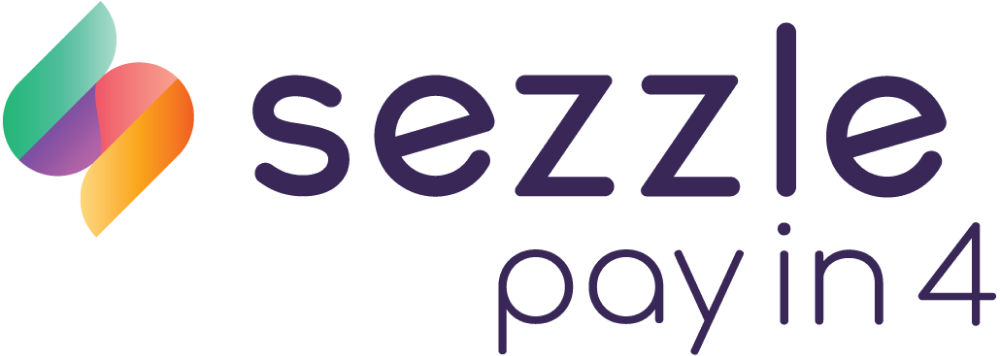Unlocking consumer spending power: How Retailers Can Align With Consumers’ Payment Needs
August 28, 2025

Even when sales and consumer sentiment are strong, do retailers’ fears about consumer spending power ever disappear? What factors play a role in downplaying or amplifying these concerns? Let's take a look.
Considering recent macroeconomic challenges, the ability to proactively evaluate and respond to consumer shifts has never been more critical.
Conducted by Sezzle and Retail Dive’s studioID in March 2025, a survey of 150 senior-level retail executives examines:
Retail sales challenges
Attitudes toward spending power
Payment options as gateways to better customer relationships
The impact of payment platforms on revenue
The big takeaway: While retail leaders recognize that success comes down to how they serve their customers, data shows that payment accessibility and flexibility are key components to improve the experience. By making payments more seamless and adaptable to consumer needs, merchants can strengthen loyalty and drive growth.
Use the exclusive information and expert observations in this report to evaluate your own payment platforms and strategies and make sure you’re doing everything you can to fortify consumer spending power.
Despite Positive Consumer Shopping and Spending Trends, Retailers Are Concerned
As of March 2025, retailers report positive growth across two key metrics: spending per visit and overall visits:
70% report a rise in customer spending per visit
74% report a rise in customer visits to their stores/websites
At the time of the survey, these same retailers told us they also don’t believe their customers feel financially constrained. Case in point: 74% believe that fewer than half of their customers struggle financially, even as costs continue to rise.
Retailers See Higher Consumer Spending, More Visits
But not all is clear-cut: Executives do seem to fear that these trends are unsustainable — or perhaps they’re even projecting their own economic concerns onto consumers. How can we tell? Because, despite these positive signs of growth, some issues never go away. Survey respondents say their biggest sales challenges include:
Attracting new customers: This requires the ability to adapt and differentiate based on shifting behaviors, market trends, and competitive pressures
Retaining existing customers: If retailers fail to keep up with the products or payment methods consumers prefer, their shoppers may look elsewhere.
Offering competitive pricing: Maintaining an edge means understanding not only consumer preferences but also other external pressures to strike a balance between staying affordable and maintaining profitability.
Lower customer spending power: When consumers have less to spend, this impacts demand, pricing, and business stability. Eight in 10 respondents say they’re “extremely” or “very” concerned with changes in consumer spending power impacting their sales.
Why do these paradoxes exist: retailers reporting positive growth while also grappling with major sales concerns? Current economic challenges, including tariffs, inflation, and a weakening job market, are likely contributing to retailer anxiety and creating uncertainty about the future.
“Responsible leaders are also aways looking out for their business,” explains Nancy Eichler, who joined Sezzle as senior vice president of marketing after spending more than a decade in retail sales leadership. “They never get too comfortable because they know a pivot could always happen.”
Sometimes, she explains, the challenge of staying ahead can be influenced by a disconnect between economic data and consumer perception, too, which may be reflected in the survey results. For example, over the past year, several economic indicators have suggested overall positive trends and growth. Meanwhile, many media narratives focused on the headwinds: inflation, uncertainty, and potential downturns.
When what consumers hear doesn’t align with what they personally experience, this can prompt them to be wary as a precautionary measure. This is especially true as the economic climate becomes even more unpredictable. And because retailers try to model consumer spending patterns based on economic indicators, shifts can be difficult to predict.
Addressing Consumer Spending Concerns with Timely Solutions
Recent history has proven to businesses everywhere—not just in retail—that the economic environment can change overnight.
To be resilient and boost loyalty in an uncertain spending climate, retailers must proactively address spending power concerns while demonstrating to consumers that they come first. While this involves many strategies, one of the most important is offering a variety of payment methods to meet consumers where they are with financial needs and preferences.
For example, a college student may want to purchase a laptop but prefers to split the cost into manageable installments so they have funds leftover for rent. A frequent traveler may prefer contactless payments so they don’t have to carry cash or cards.
Overall, retailers seem to recognize these differing needs, and they see value in what serving them can bring: 63% strongly agree that offering multiple payment options at checkout provides incremental revenue.
“Consumer choice is an important part of the economic equation,” says Eichler. “If you only give consumers one option, and they don’t have access to that option, then their only other choice is to not make a purchase. The power of payment choice should be in consumers’ hands, not the retailer’s. If you don’t offer what they want, you shut off the consumer altogether. Maybe they have more spending power on one BNPL platform vs. another. If you don’t offer that platform, then you’ll likely lose the sale.”

Why the Payment Option You Add This Year Should Be Another BNPL
Expanding payment options seems to be front and center. In the next 12 months, 81% of retail executives say they’re likely to add a payment method.
For many retailers, a buy now, pay later (BNPL) platform should be their first choice, even if they have one or more BNPL platforms already in place.
Stopping at just a few BNPLs is a short-sighted strategy. Why? Because there’s incredible value in giving shoppers multiple options to choose from. Each provider you add enhances their choices and strengthens their purchasing power.
For example, Sezzle’s in-app Money IQ is an educational platform where consumers can earn Sezzle spend as they learn about finances and answer questions correctly. It also offers exclusives tied to specific brands. The value-add that comes from specific BNPLs, as Eichler explains, can have a halo effect on the retailers that choose to work with them.
Having multiple platforms to choose from is also something consumers expect. More than three-quarters of retailers strongly agree that offering more than one BNPL option creates a competitive advantage when it comes to attracting Millennial and Gen Z shoppers.
Finally, BNPL is the only payment platform that truly helps consumers maintain and even increase their spending power. Here’s how:
It breaks payments into manageable installments. They can make smaller, segmented payments that are more budgetable and manageable, putting higher-dollar items or more purchases within their reach.
It reduces financial constraints. BNPL allows shoppers to manage multiple financial commitments, even if they don’t qualify for traditional payment platforms. They can buy what they need without relying on credit cards or paying interest.
It provides purchase flexibility. Consumers can feel more confident making purchases when they can allocate funds across multiple needs without depleting their cash reserves.
The right BNPL platform can also address what retailers say are their biggest challenges when introducing new payment options.
For 45% of executives, high transaction fees are a hurdle. To work around this, BNPL platforms should offer clear, predictable fee models that can be planned for. It’s also important to note that sales increases generated through the platform can help offset expenses.
For 44% of executives, integration complexity is a barrier to bringing new payment platforms onboard. To avoid this complication, the BNPL platform you choose should be easy and seamless to integrate with popular commerce platforms and offer dedicated assistance and support to make sure it’s implemented correctly.
How to Say ‘Yes’ to More Shoppers
Making shopping more inclusive is vital to maintaining and expanding your customer base. These shoppers’ spending power depends in part on the payment platforms you offer. Will you hold back your shoppers’ purchasing potential? Or, will you unlock new growth channels? There’s a big opportunity ahead for retailers that are ready to act fast.
Right now, 76% of merchants have yet to supply BNPL as a solution for underbanked or low-credit shoppers. As a result, this group of consumers is being limited in their ability to shop confidently. Everything is more expensive right now: insurance, groceries, housing, food, healthcare. At any moment, a consumer could decide it’s too much and opt to pull back on spending. But if they have the right BNPL as an option, they can continue spending without sacrificing their financial stability.
By elevating payment accessibility through BNPL, consumers’ financial barriers become open doors. Your retail brand becomes a force known for creating a space where everyone can participate in the marketplace. This isn’t only good for them and you — it’s good for the economy, too.
Choosing a Customer-First Digital Payment Platform
Offering payment options that enhance customer experiences can help retailers build loyalty, meet consumers’ evolving needs, and reduce abandoned carts.
Customer-first payment options turn transactions into gateways to stronger customer connections and higher sales. “One of the most impactful ways for a retailer to create a better relationship with their consumers is to give those consumers as many options for payment as they possibly can so they’re not limited,” Eichler explains.
If you’re one of the 81% of retailers planning to add a new payment option in the next 12 months, it’s critical to choose a digital platform that will prioritize consumer needs, preferences, and experiences with every transaction.
“Just like with credit card types, every consumer has a BNPL preference,” Eichler points out. “Payment methods are no longer one size fits all. And each method offers its own benefits.”
What does a customer-first digital payment platform look like?
It should:
Suit different buyers with flexible payment plan options to support different financial situations and purchasing needs.
Function seamlessly at non-partner merchants to expand consumer choices.
Provide access to exclusive deals and discounts to help shoppers stretch their budgets and increase their spending power.
Support payment rescheduling options and grace periods to create a stress-free experience and help consumers maintain financial stability.
Help consumers build credit and boost financial literacy to help them make more informed decisions.
Connect you to detailed insights into customer behavior so you can refine strategies to optimize sales.
What to Know About BNPLs Before You Commit
It’s critical to adapt to economic challenges with innovative, customer-first digital payment options that give shoppers greater financial flexibility and help them stretch their spending power.
When retailers embrace the right payment solutions, their concerns about buying capacity fade while they help shoppers feel confident about their financial decisions, even in an uncertain economy.
“Really take a close look at the BNPL platform you choose,” advises Eichler. “Before you commit, determine whether it offers advantages that will bring you new consumers and help you capture higher value from existing customers.”
About the Research
Sezzle and Retail Dive's studioID surveyed 150 senior-level executives in the retail/e-commerce sector between February 19 and March 12, 2025. All of their companies are headquartered in the U.S. and sell their goods and merchandise both in-store and online. The size of participating organizations, in terms of their worldwide annual revenue in U.S. dollars, ranges from $250 million to $1 billion or more.

